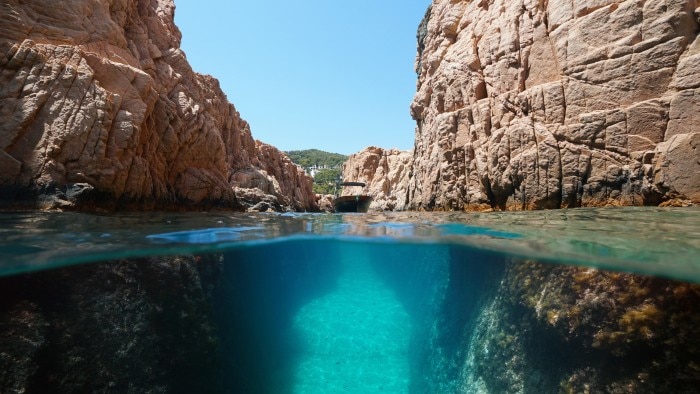MENU
FR | EUR
-
-
-
- Services pour bioprocédés
- Services pour centrifugeuse et rotors
- Services pour Mastercycler
- Services pour automates de pipetage
- Services pour congélateurs
- Services pour incubateurs
- Services pour agitateurs
- Services pour appareils de photométrie
- Service de contrôle de la température et de l’agitation
- Service pour pipette
-
-
-
-
- Services pour bioprocédés
- Services pour centrifugeuse et rotors
- Services pour Mastercycler
- Services pour automates de pipetage
- Services pour congélateurs
- Services pour incubateurs
- Services pour agitateurs
- Services pour appareils de photométrie
- Service de contrôle de la température et de l’agitation
- Service pour pipette
-
FR | EUR
-
- Centrifugeuses de paillasse
- Centrifugeuses au sol
- Centrifugeuses réfrigérées
- Microcentrifugeuses
- Centrifugeuses multi-fonctions
- Centrifugeuses haute vitesse
- Ultracentrifugeuses
- Concentrateur
- Produits IVD
- High-Speed and Ultracentrifuge Consumables
- Tubes de centrifugeuse
- Plaques de centrifugeuse
- Gestion des appareils
- Gestion des échantillons et des informations
Aucun résultat trouvé
Chercher des suggestions

Water-jacketed incubators: Disadvantages to consider
Lab Academy
- Biologie cellulaire
- Culture cellulaire
- Cellules souches
- Le quotidien au labo
- Reproductibilité
- Incubateurs à CO2
- Test
In this article of our series about water-jacketed incubators, we look at the disadvantages of this heat transfer technology.
This article was published first in "Inside Cell Culture" , the monthly newsletter for cell culture professionals. Find more interesting articles about CO2 incubators on our page "FAQs and material on CO2 incubators" .
For the cultivation of mammalian cells, 37 °C environments are commonly used inside CO2 incubators. The heat is produced by heating elements and transferred to the chamber wall. For this heat transfer, basically three technologies exist: Direct heat (heating elements are directly attached to the chamber wall), air-jacket (heating elements sit inside an air-filled cavity and the air is distributed by a fan), and water-jacketed incubators (heating elements sit inside a water-jacket outside the chamber, water is circulated via pumps).
Water-jacketed incubators have been chosen traditionally by cell culture labs with high demands regarding temperature uniformity and temperature stability during power outage. In our article series, we will analyze and evaluate the advantages and limitations of this incubator heat transfer technology and compare it to direct heat and air-jacketed incubators. In our last articles, we looked at the question of whether they can really provide higher temperature uniformity, hold the temperature longer during power outages, or provide a higher relative humidity.
Introduction
For the cultivation of mammalian cells, 37 °C environments are commonly used inside CO2 incubators. The heat is produced by heating elements and transferred to the chamber wall. For this heat transfer, basically three technologies exist: Direct heat (heating elements are directly attached to the chamber wall), air-jacket (heating elements sit inside an air-filled cavity and the air is distributed by a fan), and water-jacketed incubators (heating elements sit inside a water-jacket outside the chamber, water is circulated via pumps).
Water-jacketed incubators have been chosen traditionally by cell culture labs with high demands regarding temperature uniformity and temperature stability during power outage. In our article series, we will analyze and evaluate the advantages and limitations of this incubator heat transfer technology and compare it to direct heat and air-jacketed incubators. In our last articles, we looked at the question of whether they can really provide higher temperature uniformity, hold the temperature longer during power outages, or provide a higher relative humidity.
Main disadvantages of water-jacketed incubators to consider:
- No high temperature disinfection: 140 – 180 °C sterilization has become the standard disinfection method in cell culture labs. Due to their construction, water-jacketed incubators cannot be heated up to these temperatures and therefore require additional efforts to achieve the same level of contamination prevention. This is especially necessary as these incubators usually come with many internal fan-associated parts with grooves and that makes detection of condensation and cleaning difficult without disassembling.
- Low usable space vs. outer dimension ratio: Another disadvantage of water-jacket incubators is that the thickness of the water-jacket wall and the fan-associated parts reduce the interior space of the incubator. This loss of interior space can be significant; 25% and more. In other words, four fanless, direct-heat incubators can accommodate the same number of cell culture vessels as five water-jacketed incubators due to the reduced usable space.
- Higher maintenance and service efforts – even when not in use: To avoid contamination and prevent rust and warranty voiding at the same time, the specific water type to fill the water-jacket must be chosen with care. For this, a specialized rust inhibitor must often be replenished every two years. If the water must be drained from the lower device in a stack for maintenance, the upper device must be drained as well to avoid a potentially dangerous shift in the center of mass. An additional problem arises when the incubator is on idle. As it is almost impossible to dry the water-jacket completely and avoid rust-formation, the device needs to be kept full. Even if the incubator is not in use, the device must be properly maintained as described above.
- Hard to move once filled: Depending on the model, water-jacketed incubators are filled with 40 – 70 L of water. In addition to the weight of the device itself, this makes it almost impossible to move the device safely.
Lire moins
Lire moins
Interested in other helpful articles related to selecting, handling, or maintaining CO2 incubators?
Lire moins


